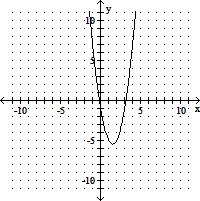Approximate to the nearest hundredth. ±
± 
A. 2.80, -1.60
B. 0.66, -0.66
C. 3.92, -2.72
D. 1.26, -0.06
Answer: D
You might also like to view...
Solve. Graph the solution on a number line, and express it in interval notation.1 ? 2x - 3 ? 9![]()
A. -6 < x < -2, (-6, -2)![]()
B. 2 < x < 6, (2, 6)![]()
C. -6 ? x ? -2, [-6, -2]![]()
D. 2 ? x ? 6, [2, 6]![]()
Sketch the graph of the equation. Identify the vertex and the intercepts.y = x2 - 1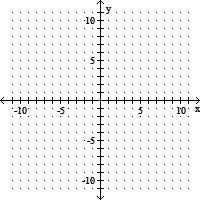
A. Vertex: (0, -1);
x-intercepts: none;
y-intercept: (0, -1)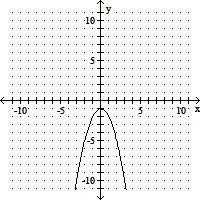
B. Vertex: (0, -1);
x-intercepts: (-1, 0) and (1, 0);
y-intercept: (0, -1)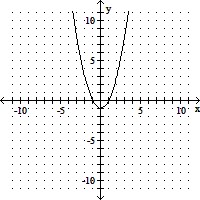
C. Vertex: (-1, 0);
x-intercept: (-1, 0);
y-intercept: (0, 1)
D. Vertex: (0, 1);
x-intercepts: none;
y-intercept: (0, 1)
The data table has been generated by a linear, quadratic, or cubic function f. All zeros of f are real numbers located in the interval  By making a line graph of the data, conjecture the degree of f.
By making a line graph of the data, conjecture the degree of f.
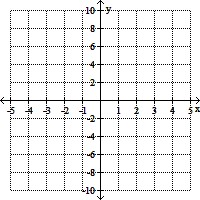
A. 1 B. 2 C. 3 D. 4
Graph the quadratic equation. Identify the vertex and the intercept points with their coordinates.y = 2x2 + 6x - 1
A. Vertex:  ;
;
x-intercepts:  ,
,  ;
;
y-intercept: (0, -1)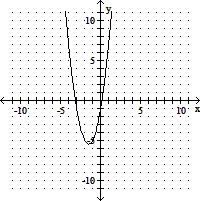
B. Vertex:  ;
;
x-intercepts:  ,
,  ;
;
y-intercept: (0, -1)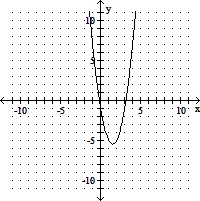
C. Vertex:  ;
;
x-intercepts:  ,
, ;
;
y-intercept: (0, -1)
D. Vertex:  ;
;
x-intercepts:  ,
,  ;
;
y-intercept: (0, -1)